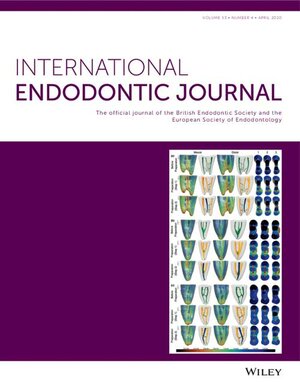Apical root canal microbiome associated with primary and posttreatment apical periodontitis: A systematic review
Abstract
Background
Microorganisms colonizing the apical root canal system are conceivably the ones directly involved with the causation and maintenance of apical periodontitis.
Objectives
This article systematically reviews the reports on the microbiome occurring exclusively at the apical root canal of teeth with primary and posttreatment apical periodontitis.
Methods
The electronic databases PubMed, Embase, Web of Science, Science Direct, and Proquest were searched up to August 2023. Clinical studies using culture and molecular microbiology methods to identify the microbial taxa present exclusively in the apical root canal segment of infected teeth with apical periodontitis were included. Studies were critically assessed using the Joanna Briggs Institute Critical Prevalence Assessment Checklist.
Results
From 2277 articles initially detected, 52 were selected for full reading and 21 were eventually included in this review. Of these, molecular methods were used in 19 and culture in 2 studies. Ten studies evaluated primary infections, 8 evaluated posttreatment infections, and 3 included both. Cryopulverization of the apical root specimens was conducted in 11 studies. All studies evaluated the prevalence and diversity of bacteria, and only one also reported on fungi. Overall, the most frequent/abundant bacterial taxa found in the apical canal of primary infections were Pseudoramibacter alactolyticus, Olsenella uli, Fusobacterium species, Streptococcus species, Porphyromonas endodontalis, Prevotella species, Actinomyces species, Parvimonas micra, Treponema denticola, Synergistetes species, and an as-yet uncharacterized taxon. In posttreatment infections, the most prevalent/abundant bacterial taxa included species of Streptococcus, Enterococcus, Fusobacterium, Actinomyces, Pseudoramibacter, Pseudomonas, and Propionibacterium. At the phylum level, Firmicutes was the most represented. The average apical bacterial load ranged from 105 to 106 in primary infections and from 103 to 104 in posttreatment infections.
Discussion
Microbial diversity in the apical part of the root canal system was examined encompassing data from both primary and posttreatment infections. Heterogeneity amongst the studies, especially in sample collection and microbial identification methods, is an important limitation that prevented a meta-analysis.
Conclusions
There is a pronounced bacterial diversity in the infected apical canal, with a high interindividual variability. Different microbiome compositions at the species/genus level are observed according to the infection type.
Registration
PROSPERO CRD42021275886.


 求助内容:
求助内容: 应助结果提醒方式:
应助结果提醒方式:


